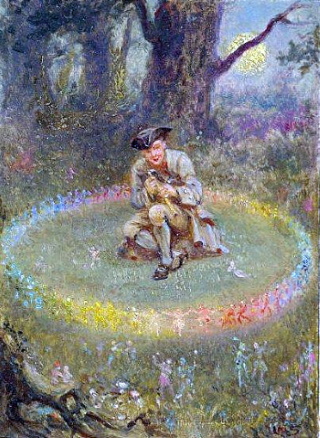
Aberfoyle (Scottish Gaelic: Obar Phuill) is a village that lies inside the Lomond & Trossachs National Park (Scottish Gaelic: Pàirc Nàiseanta Loch Laomainn is nan Tròisichean). Seen as a gateway to the Trossachs, Aberfoyle is situated on the River Forth (Abhainn Dubh) at the foot of Craigmore. Loch Ard (Loch na h-Àirde) , Loch Chon, Loch Arklet and Loch Lomond (Loch Laomainnare) to the West, Loch Katrine (Loch Ceiteirein), Loch Achray and Loch Venachar (Loch Bheannchair) to the North and the Lake of Menteith (Loch Innis Mo Cholmaig), to the East. The village is an attractive place to visit with a number of connections to historical figures. One of the most famous being the Reverend Robert Kirk,
Robert Kirk (9 December 1644 – 14 May 1692) was a minister, Gaelic scholar and folklorist. He was the seventh son of the minister of Aberfoyle. He went on to study theology and eventually became minister of Aberfoyle, from 1685 until his death in 1692. He is noted for providing the first translation to Gaelic of the book of Psalms, published at Edinburgh in 1684 as Psalma Dhaibhidh an Meadrachd, &c. He also helped in one of the first publications of the bible into Scottish Gaelic. However, it was for another work, The Secret Commonwealth, and the stories that surround his death that he is now best remembered. Robert Kirk had an interest in the supernatural, fairies, folk beliefs, second sight and traditional stories and beliefs held by the people of the Scottish Highlands. He collected and wrote about these tales in around 1691, although his work was not published in his lifetime. They were released by Scottish author Walter Scott in 1815, then later a second edition was published in 1893, under the title The Secret Commonwealth of Elves, Fauns and Fairies.